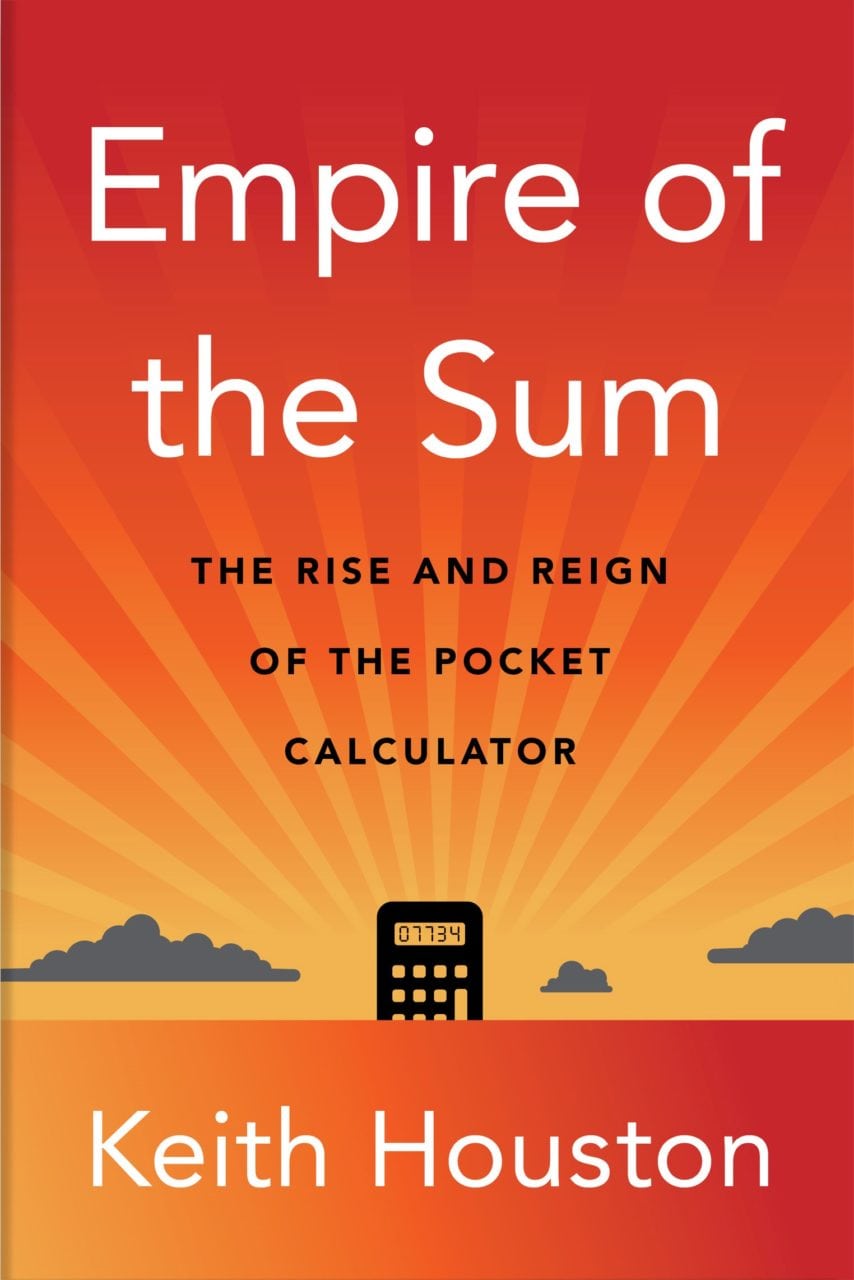My new book, Empire of the Sum: The Rise and Reign of the Pocket Calculator, will be published in the US this coming Tuesday, the 22nd of August, and to mark the occasion I thought I’d start a series of posts about a few of my favourite calculators.
Today, it’s first things first. Well, not exactly, since I am rudely omitting hands, feet, genitals, pebbles, sticks, counting tokens and abacuses from this list of portable calculating devices. But today’s calculator is, at any rate, the oldest one that I’ll be writing about this week. Enter the slide rule.

For the uninitiated, slide rules are analog mechanical calculators, like the one shown above. They’re similar to normal rulers but with two main distinctions: they have a number of specialised scales (usually four at a minimum, but often many more) that encode different mathematical operations; and they have a movable slide that allows their scales to be aligned as necessary to carry out those operations.
I had a lot of fun digging into the slide rule’s history. It was invented by a sixteenth-century mathematician and Anglican minister named William Oughtred, who, ironically, was avowedly against using anything other than good old fashioned brain power when it came to working through mathematical problems. He once proclaimed that devices that simplified mathematical operations turned their users into “doers of tricks, and as it were Iuglers [jugglers].”
Oughtred had the insight to line up a pair of what were called “Gunter scales”, or logarithmic rulers, to make it easy to multiply any two numbers together to at least a few significant figures of precision — a job that had been, until that time, a frustratingly manual process. In turn, Gunter scales were based on the concept of logarithms, as devised by John Napier of Edinburgh, an alchemist, astrologer, religious polemicist, and occasional mathematician. Edinburgh’s Napier University is named after him.
Courtesy of my father in law, who has indefatiguably trawled the antique stores of the American Midwest, I am now the proud owner of a number of vintage slide rules. Not the one shown above — that one belonged to Sally Ride, the first American woman in space — but a respectable selection nonetheless of rules covering the gamut from the classroom to the engineering laboratory. Slide rules are deceptively simple things, and they are intensely satisfying to get to grips with. If you aren’t familiar with them, head over to eBay to see what you can find. A piece of mathematical magic can be yours for as little as a few pounds.
If you’d like to pre-order a copy of Empire of the Sum, this post will point you in the right direction. And don’t forget that American readers can enter a competition to win one of two copies! Visit this post to find out more.

